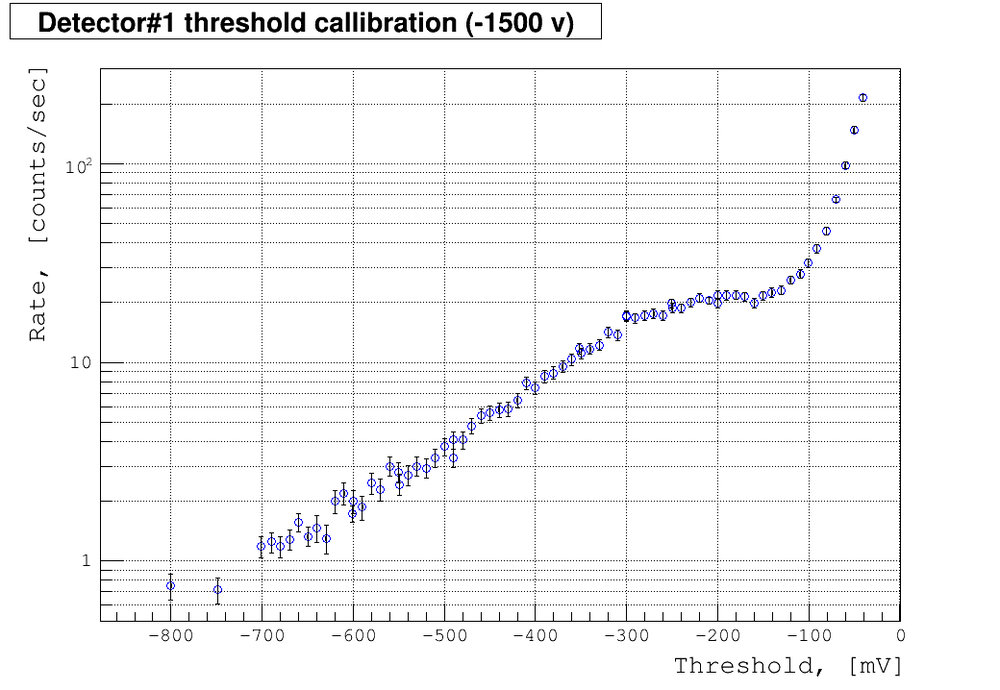Difference between revisions of "05/11/2011 n's detector threshold calibration"
Jump to navigation
Jump to search
(Created page with '[https://wiki.iac.isu.edu/index.php/N%27s_detector_calibration Go Back] Because is something wrong I decided to measure the counts rate as function of threshold energy. Maybe m…') |
|||
| (One intermediate revision by the same user not shown) | |||
| Line 1: | Line 1: | ||
| − | [https://wiki.iac.isu.edu/index.php/ | + | [https://wiki.iac.isu.edu/index.php/Roman_measurements go back] |
Because is something wrong I decided to measure the counts rate as function of threshold energy. Maybe my threshold was incorrect. | Because is something wrong I decided to measure the counts rate as function of threshold energy. Maybe my threshold was incorrect. | ||
| − | Below are my results for n's detector with HAMAMATSU PMT (-1500 V) | + | Below are my results for n's detector with HAMAMATSU PMT (-1500 V). The signal is cosmic. |
[[File:Det1 callibration.png | 1000 px]] | [[File:Det1 callibration.png | 1000 px]] | ||
Latest revision as of 19:01, 24 May 2012
Because is something wrong I decided to measure the counts rate as function of threshold energy. Maybe my threshold was incorrect.
Below are my results for n's detector with HAMAMATSU PMT (-1500 V). The signal is cosmic.
So it looks like my previous threshold value (-500 mV) was not good. Let's set it up the -200 mV. And let's see does the n's detector sensitive to the source. The same set up and distances as before.
| counts/sec (5 min test), no source | counts/sec (5 min test), with source on the top of PS1 | |
|---|---|---|
| n's | 19.890.26 (total 5966 cnts) | 58.840.29 (total 17652 cnts) |
So now we see the source. The ratio are:
